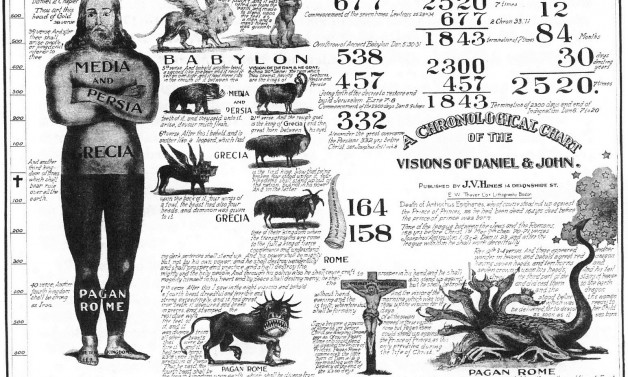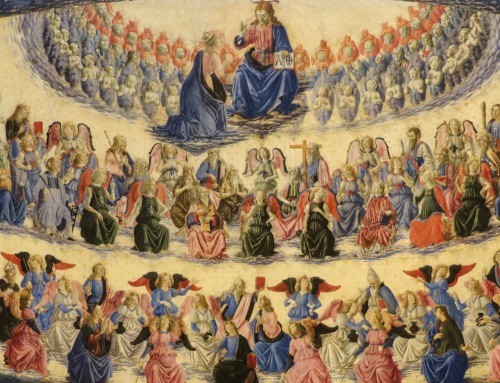If you lived in D.C., New York, or any number of large cities in the United States in 2011, you probably remember the strange month or two when The End of the World became an advertising sensation. Judgment Day, May 21, declared passing buses. THE END 2011, opined passing cars. WeCanKnow.com, insisted billboards, against all evidence.
I can’t say I was sad about all that. Not for any reason you might be thinking—i.e., awareness of the end times, the salutary effects of thoughts about judgment, the benefit of people unwontedly discussing hell (and how to avoid it)—but rather because I’ve always had a tremendous love of failed end times prophecies.
Now, I come by all of this honestly. I remember my father telling me stories about the Millerites as a child, and my heart still burns with filial love when I remember how he got my family put on the no-visit list for Seventh-Day Adventist door-to-door proselytizers by recounting more details of the Great Disappointment (just what it sounds like, only there were so many of them, it really deserves a plural) than they were comfortable with.
But don’t think this is merely what theologians call morose delectation, or what the Germans call Schadenfreude. I’m not delighted to see people’s hopes dashed; I’m delighted that by holding to a strict biblical literalism, our apocalyptic friends—from the Jehovah’s Witnesses to the Millerites to the unfortunate Harold Camping (of WeCanKnow.com fame)—have stumbled upon irrefutable evidence of the need for Tradition as a dynamic of God’s one revelation.
This proof begins, as any good proof does, with Byzantine feats of mathematics. Just as a brief example, Wikipedia describes Camping’s sure-fire, 100% biblical method of calculating Judgment Day as being (atonement × completeness × heaven)², where atonement=5, completeness=10, and heaven=17, resulting in the number 722,500, which just so happens to be the number of days between April 1, 33, and May 21, 2011.
It’s easy enough to see that Camping’s just-the-Bible-thanks method would be impossible to imagine without a community of Christians living the faith of Jesus Christ together, passing on shared experiences and beliefs that both arise from the Scriptures and influence the way those Scriptures are read: in other words, a great deal of what the Church means when she speaks about Tradition. You can read the Bible all your life, and I promise you’ll never discover that Christ was born in 0 B.C./A.D.; neither will you find a verse explaining that five is the number of atonement, or ten the number of perfection (although you will find lots of tens in the Bible), and seventeen the number of heaven; still less will you find an explanation of why these numbers need to be multiplied together and squared; last but not least, you will never be able to quote chapter and verse indicating that (atonement × completeness × heaven)² is the formula for calculating the end times.
As odd as all this math is, its basic assumptions are correct: that there is more meaning in the Bible than is immediately apparent, more truth in Jesus Christ than we are consciously aware of when we accept him as our Lord and savior at baptism, and that it takes a life of individual and shared prayer, experience of Christ, study, and life in the Spirit to come to understand what God reveals in his Word.
That is to say, Scripture must be received and interpreted by Tradition. This should not surprise us, as we cannot actually conceive of a form of Christianity that does not rely on tradition and the development of doctrine; even the smallest reality that humans appropriate must germinate and fructify in the human mind over the course of time, and how much more so the living reality of Jesus Christ himself.
Christians do not have a choice about whether to be part of a tradition. But we can choose to live that Tradition as part of a threefold cord with the Magisterium and Scripture, communicating the entire active presence of Jesus Christ, or we can mistakenly set one or the other of those realities against each other. But can we know whether such a threefold unity of revelation is really possible? Under the guidance of the Holy Spirit, in the living reality of the Church, WeCanKnow.
✠
Image: Millerite Chart (1843)







